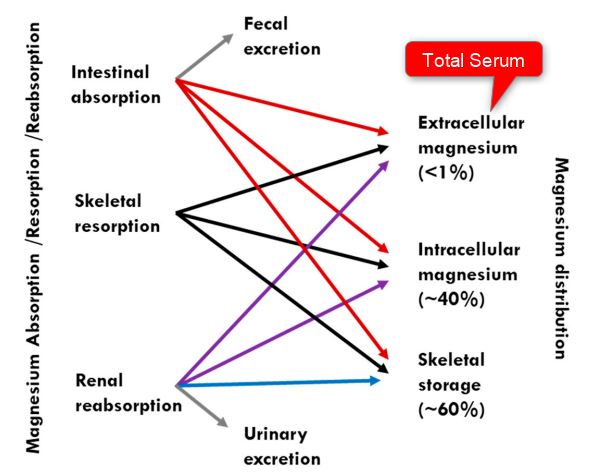Magnesium – the common test does not show deficiency
Magnesium: Are We Consuming Enough?
Nutrients 2018, 10(12), 1863; https://doi.org/10.3390/nu10121863
Mohammed S. Razzaque 1,2,3,4
1 Department of Pathology, Lake Erie College of Osteopathic Medicine, Erie, PA 16509, USA
2 Department of Oral Health Policy & Epidemiology, Harvard School of Dental Medicine, Boston, MA 02115, USA
3 Department of Preventive & Community Dentistry, School of Dentistry, College of Medicine & Health Sciences, University of Rwanda, Kigali, Rwanda
4 College of Advancing & Professional Studies (CAPS), University of Massachusetts Boston (UMB), Boston, MA 02125, USA
(This article belongs to the Special Issue Nutritional Status and Bone Health)
📄 Download the PDF from VitaminDWiki

Magnesium is essential for maintaining normal cellular and organ function. In-adequate magnesium balance is associated with various disorders, such as skeletal deformities, cardiovascular diseases, and metabolic syndrome. Unfortunately, routinely measured serum magnesium levels do not always reflect total body magnesium status. Thus, normal blood magnesium levels eclipse the wide-spread magnesium deficiency. Other magnesium measuring methods, including the magnesium loading test, may provide more accurate reflections of total body magnesium status and thus improve identification of magnesium-deficient individuals, and prevent magnesium deficiency related complications.
Magnesium Tests
Total serum magnesium -The most popular test, but only measures 1% of body content
Oral magnesium loading test
Intravenous magnesium loading test
RBC (red blood cell) magnesium content
Hair magnesium content
Muscle magnesium content (biopsy)
Bone magnesium content
24-h urinary magnesium
The ratio of ionized to total magnesium
